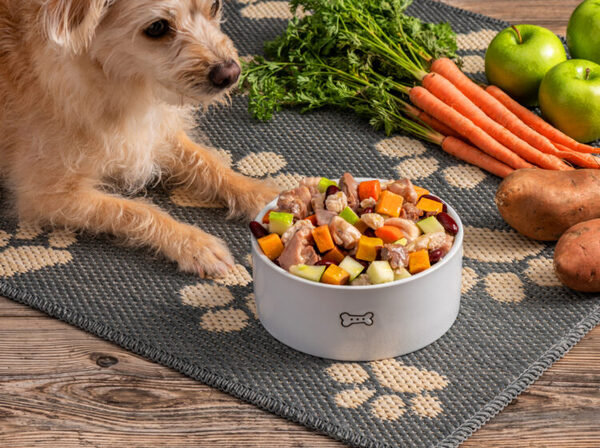Choosing the right dog food is crucial for your pet’s health and happiness. With so many options available, finding the best fit can be overwhelming. In this guide, we’ll walk you through everything you need to know about selecting the perfect dog food for your furry friend.

Your dog’s diet directly impacts their overall health, energy levels, and longevity. Feeding your pet the right dog food helps:
Maintain a healthy weight.
Boost their immune system.
Promote a shiny coat and healthy skin.
Support proper digestion.
Choosing the right dog food isn’t just about taste—it’s about meeting their nutritional needs at every stage of life.
Puppies need food rich in protein and calories to support growth. Look for labels that mention "formulated for puppies."
Adult dogs require balanced maintenance diets that provide energy without excessive calories.
Senior dogs benefit from food designed for joint health and weight management.
Small breeds need nutrient-dense food due to their fast metabolism.
Large breeds benefit from formulas that support joint health and controlled growth rates.
Active dogs, such as working or sporting breeds, require more calories and protein, while less active dogs need a lighter formula to prevent obesity.
Convenient and long-lasting.
Helps with dental health by reducing plaque buildup.
Higher moisture content, great for hydration.
More palatable for picky eaters.
Mimics a dog’s natural diet with raw meats and vegetables.
Requires careful preparation and storage.
Grain-free diets are ideal for dogs with grain allergies.
Grain-inclusive diets provide necessary fiber for most dogs.
First ingredient: Should be a named protein source like chicken or beef.
Avoid vague terms like "meat by-products."
Check for protein, fat, fiber, and moisture content.
Look for at least 18% protein and 5% fat for adult dogs.
Ensure the food meets the standards of the Association of American Feed Control Officials (AAFCO) for complete and balanced nutrition.
If your dog has symptoms like itching, digestive upset, or excessive licking, they might have a food allergy or sensitivity. Common culprits include:
Beef
Chicken
Dairy
Grains
Switching to hypoallergenic or limited-ingredient dog food can help identify and manage allergies.
High-quality dog food doesn’t always mean the most expensive brand. Look for:
Store brands with good reviews.
Buying in bulk to save costs.
Brands offering coupons or loyalty programs.
Some pet owners prefer making their own dog food to have complete control over ingredients. While this can be a great option, ensure:
The diet is approved by a veterinarian or pet nutritionist.
It includes all necessary nutrients, vitamins, and minerals.
Not all dogs have the same nutritional requirements. Consider your pet's breed before deciding.
Cheaper options may lack essential nutrients or use lower-quality ingredients.
Even the best dog food can lead to obesity if overfed. Follow the feeding guidelines on the packaging.
Switching dog food abruptly can upset your pet’s stomach. Follow these steps for a smooth transition:
Mix 25% new food with 75% old food for a few days.
Gradually increase the ratio of new food over a week.
Monitor your dog for any adverse reactions.
Most adult dogs thrive on two meals per day, while puppies may need 3–4 smaller meals.
Some human foods like chicken, carrots, and rice are safe, but avoid toxic foods like chocolate, grapes, and onions.
Mix wet and dry food, or add a small amount of chicken broth to make meals more appealing.
Choosing the right dog food involves understanding your dog’s unique needs, reading labels carefully, and avoiding common pitfalls. Remember, the best dog food is one that keeps your pet happy, healthy, and full of energy.
animal tags: dog-food
We created this article in conjunction with AI technology, then made sure it was fact-checked and edited by a Animals Top editor.